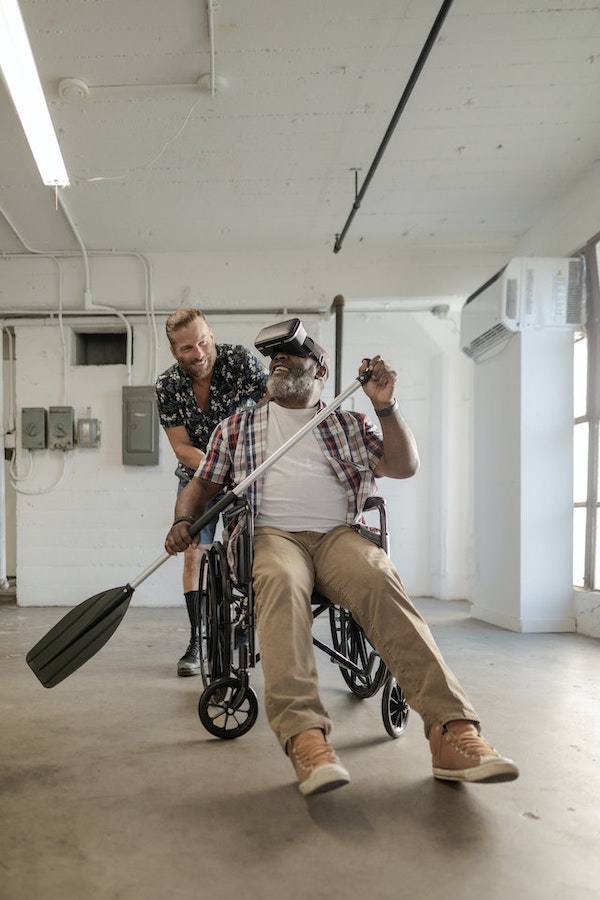Virtual reality therapy: principle and effectiveness

It is a new way of treating patients which is part of the medical pathway. Virtual reality isn't just about entertaining or making us more productive. Virtual reality exposure therapy (TERP) is intended to be a way to address certain ailments, such as phobias or anxiety, but not only that. Many companies already offer their services in care units wishing to try new approaches. We are trying to find out a little more about their effectiveness.
Virtual reality therapy: what for?
Virtual reality therapy is not that new. The first tests were carried out in the 1990s. Of course, the dazzling technological progress of the last thirty years has made it possible to offer sensations that are closer to reality, but also to provide equipment at a lower cost, and therefore more accessible. This therapy consists of the use of a virtual reality headset to immerse the patient safely in an environment that they do not control.
https:/ /www.youtube.com/watch?v=TEUYprJbjjE&ab_channel=C2Care
Thus, TERVs make it possible to treat distressing situations for a person, or even their phobias. These virtual reality therapies are based on the exposure principles of Cognitive-Behavioral Therapies (CBT). A psychologist accompanies the patient throughout the therapy, which is brief but divided into several stages. THIS type of therapy also makes it possible to treat addictions and eating disorders, which are generally directly linked to psychological disorders.
Fear of crowds, planes, animals, emptiness…Virtual reality allows everyone to expose themselves to situations that can prevent us from moving forward.
How it works ?
Therapy takes place in several stages:
- Getting to know the therapist and prioritizing situations
The first step consists of taking stock of the emotions , environments/objects , which impact the patient. This is also an opportunity to determine a specific objective with him. It will allow you to prioritize the situations that can lead to the main problem in order to personalize the experience.
- Psychoeducation
The therapist presents his pedagogy intended to explain to the patient why he has such reactions. He will then present the elements that will be worked on to reduce anxiety.
- Exposure to VR
Finally, the therapist uses the virtual reality headset on the patient, both to accustom him to unpleasant situations and to establish initial conclusions by observing the reactions. It is important, in this phase, that the patient remains active so as not to suffer from the situation.

How effective?
TERVs are starting to give their first results and these are encouraging. According to one study, patients who tried TERV need about 1/3 fewer sessions than other cognitive-behavioral therapies. In some cases, such as combating agoraphobia, fear of insects, driving on highways and even post-traumatic stress, TERVs have produced excellent results.
[= ]Also, many companies offer their services to health professionals, providing equipment and training on the software created.
Virtual Reality Therapy for the end of life
Recently, treatments other than those intended to eliminate phobias have emerged. If the use of virtual reality requires further studies to determine the benefits for patients in palliative care, an article published in 2023 in the journal ' Supportive Care in Cancer' revealed an improvement in pain, fatigue , anxiety and quality of life in general among 800 patients suffering from cancer and who accepted a TERP.

Another study showed a reduction in certain symptoms directly linked to care, such as shortness of breath or chronic fatigue. Furthermore, the interaction, the novelty, the fun side of wearing a virtual reality headset create moments of pleasure that are particularly important for people in palliative care. These therapies make it possible to stimulate the memories of elderly people, relieving their last moments.
TERPs are not yet completely democratized but they already promise real progress in the health sector. There is no doubt that this type of therapy will spread in the era of artificial intelligence and in the face of perpetual technological advancement which enhances ever more developed equipment. They will require the input of professionals and strict controls by the competent authorities.
Sources: healthnews , C2Care , psy92.net , phobia.com


